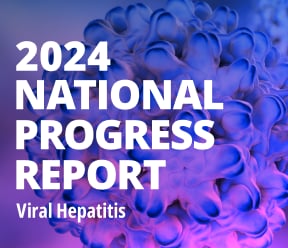2022 Viral Hepatitis Surveillance Report
Tens of thousands of new cases of viral hepatitis occur every year in the United States. Viral hepatitis is a serious public health threat that kills thousands of Americans annually and is a leading cause of liver cancer. Hepatitis A and hepatitis B are vaccine-preventable and hepatitis C can be cured. The Viral Hepatitis Surveillance Report — United States, 2022 presents information from the ongoing, systematic collection, analysis, and interpretation of viral hepatitis-related data. The surveillance process is essential to monitor trends that inform planning, implementation, and evaluation that are needed to improve viral hepatitis public health policy and practice in support of national viral hepatitis elimination goals.
Hepatitis is an inflammation of the liver often caused by a virus. In the United States, the most common types of viral hepatitis are hepatitis A, hepatitis B, and hepatitis C. While each can produce similar symptoms, each hepatitis virus affects the liver differently, has different routes of transmission and infection, and typically affects different populations.
Fortunately, effective vaccines are available to help prevent hepatitis A and hepatitis B, and there is treatment for hepatitis B. Although no vaccine is available for hepatitis C, treatment can cure infection from the virus. Learn more about the different viral hepatitis types.
Hepatitis A rate decreased during 2022
After annual increases during 2015–2019, the rate of hepatitis A decreased 88% between 2019 and 2022.
Acute hepatitis B rate remained stable during 2022
After annual decreases during 2020–2021, the rate of acute hepatitis B remained stable between 2021 and 2022.
Acute hepatitis C rate decreased during 2022
After annual increases during 2015–2021, the rate of acute hepatitis C decreased 6.3% between 2021 and 2022.
Variations of disease rates by race or ethnicity may reflect systemic cultural, behavioral, environmental, and social factors.
Rate of acute hepatitis B is highest in non-Hispanic Black populations
The rate of acute hepatitis B among non-Hispanic Black persons increased by 11.1% during 2021–2022 and was 1.7 times as high as the rate among non-Hispanic White persons.
Rate of hepatitis B-related deaths is highest in non-Hispanic Asian/Pacific Islander (A/PI) populations
The rates of reported hepatitis B-related deaths among non-Hispanic A/PI persons and non-Hispanic Black persons were 8.5 times and 2.6 times as high as the rate among non-Hispanic White persons, respectively.
Rate of acute hepatitis C is highest in non-Hispanic American Indian/Alaska Native (AI/AN) populations
Although the rate of acute hepatitis C among non-Hispanic White persons decreased during 2021–2022, the rate among non-Hispanic AI/AN persons increased by 7.4% and was 1.9 times as high as the rate among non-Hispanic White persons.
Rate of hepatitis C-related deaths is highest in non-Hispanic American Indian/Alaska Native (AI/AN) and non-Hispanic Black persons
The rates of reported hepatitis C-related deaths among non-Hispanic AI/AN persons and non-Hispanic Black persons were 3.3 times and 1.7 times as high as the rate among non-Hispanic White persons, respectively.
Centers for Disease Control and Prevention. Viral Hepatitis Surveillance Report – United States, 2022. https://www.cdc.gov/hepatitis/statistics/2022surveillance/index.htm Published April 2024. Accessed [date].




